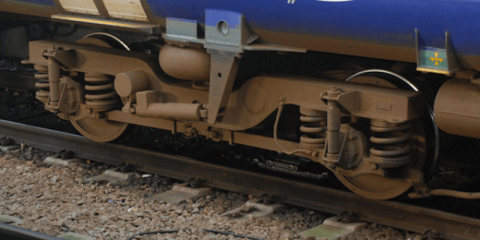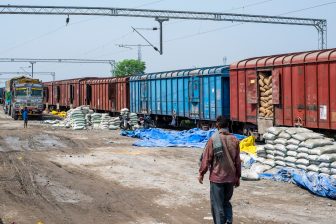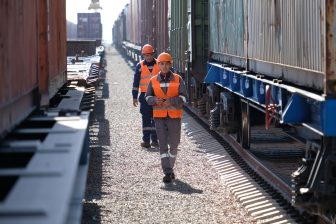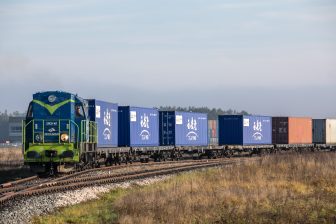
Lighter weight bogies to change rail freight industry
Reseachers at the University of Huddersfield in the UK are looking into the possibility of manufacturing lighter weight bogies for the rail freight industry. With a reduction in weight, track damage, energy consumption and carbon emissions could be lowered. Furthermore, track access charges may become more attractive.
The research is carried out by the Institute of Railway Research, a participant in a project named Dynafreight, which in turn is a component of the EU-funded scheme Shift2Rail. The aim of the project is to seek innovative technical solutions for improved train dynamics and the operation of longer freight trains.
Weight reduction
When looking at weight in the various components of a train, the weight of the bogie has most impact on the damage caused to the track, explains IRR Research Fellow Samuel Hawksbee, a structural engineer. “We want to reduce the weight of these bogies by as much as possible, but the intended reduction is by 30 per cent.”
He explains that in order to realise this weight reduction, the focus of the research is on the use of higher-strength steels as an alternative to the mild steels normally used for bogie construction. However, vital to the success of this approach is the development of techniques for improved welding of joints. “Manufacturing techniques would have to change. The railway industry could learn from automotive manufacturers, who are well ahead in reducing the weight of components”, Hawksbee explained.
Impact
The outcome of the research is expected to have a major impact on the rail freight industry, as freight per train would become more attractive in various ways. For example, by causing less damage to the tracks, rail operations may be reduced in costs, making rail freight more competitive, argued Hawksbee. Further, lighter weight bogies have environmental benefits, adding to the environmental advantages of rail freight compared to freight per road. As such, the development of lighter weight bogies fits well into the European ambition to double the amount of freight carried by rail.
The research is carried out in conjunction with the Valencia plant of Swiss-based train manufacturer Stadler, which provided information on one of their bogies to provide insight in how these could be made lighter. The Shift2Rail project is a joint undertaking under the H2020 Research and Innovation Programme.





